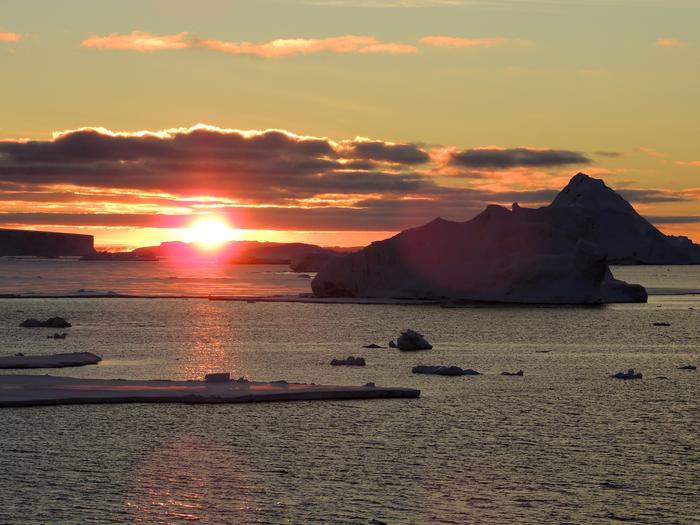Southern Ocean Enters New Climate Regime: Saltier Waters, Rapid Ice Loss, and Alarming Feedback Loops
A startling shift is underway in the Southern Ocean, a critical component of Earth’s climate system, with profound implications for global weather patterns and ecosystems. Recent research spearheaded by the University of Southampton reveals that, contrary to decades of observed trends, the surface waters around Antarctica are becoming saltier rather than fresher. Concurrently, satellite data expose an unprecedented and dramatic decline in sea ice extent, challenging existing climate models and highlighting emergent risks on a planetary scale.
For nearly four decades, the Southern Ocean’s surface experienced gradual freshening. This process stems from increased precipitation, melting ice, and stratification—where fresher, colder water overlies deeper, saltier, and warmer layers. This layering created a stable thermal structure that slowed heat transfer upward, enabling sea ice to persist, reflect solar radiation, and regulate regional and global climates. However, since approximately 2015, this subtle balance has been upended. Satellite observations coupled with in-situ robotic profilers detect a reversal: surface salinity is rising, weakening stratification and allowing heat from the ocean’s depths to surface more readily.
This re-emergence of saltier surface waters coincides with the rapid retreat of Antarctic sea ice, with losses cumulatively equivalent in area to Greenland’s massive ice sheet. The ramifications are profound—sea ice acts as Earth’s natural sunscreen, reflecting sunlight back into space. Its loss reduces planetary albedo, increasing solar absorption and accelerating atmospheric and oceanic warming. The discovery of this rapid ice retreat and salinity rise reveals a positive feedback loop: as ice vanishes and surface waters grow saltier, heat that was once trapped below now rises, melting ice from underneath and hastening its decline.
Among the most striking manifestations of these changes is the return of the Maud Rise polynya in the Weddell Sea, a recurring and expansive opening in the ice cover not seen since the 1970s. This polynya spans an area nearly four times larger than Wales and underscores how altered oceanic processes disrupt Antarctic sea ice dynamics. Such polynyas expose the open ocean to the atmosphere during winter months, impacting heat loss, salinity cycles, and carbon exchange, thus reshaping local climatology and marine ecosystems.
The implications extend well beyond the icy fringes of Antarctica. Saltier water at the surface facilitates more effective vertical heat transfer through weakened stratification, a phenomenon with the potential to change ocean circulation patterns on a global scale. This vertical mixing transports warmth upward, limiting ice growth in winter and unleashing heat previously sequestered in the ocean interior. These shifts threaten habitats vital for iconic Antarctic species such as penguins and seals and introduce uncertainty into weather systems influenced by the Southern Ocean’s heat exchange processes.
This new regime contradicts prior climate projections that anticipated continued freshening and strengthened stratification supporting stable or even expanding Antarctic sea ice. Instead, the rapidity and nature of these changes emphasize the Southern Ocean’s vulnerability to subtle shifts in global climate forcing. The data suggest that anthropogenic climate change may have unleashed complex ocean-atmosphere feedbacks unaccounted for in existing models, necessitating urgent reassessment of predicted trajectories for polar ice and global temperature regulation.
Real-time monitoring using advanced European satellite systems and autonomous ocean gliders—robotic instruments traversing the water column—has proved invaluable in capturing these sudden developments. Together, these technologies map surface salinity changes with unprecedented resolution, allowing scientists to decode the interplay between physical ocean properties and ice dynamics. This technology-driven insight marks a new era in understanding polar oceans, providing critical data to refine climate predictions and inform mitigation strategies.
The challenge now facing climate scientists and policymakers is to integrate these unexpected findings into the broader framework of Earth system modeling. Accurately simulating the Southern Ocean’s response to warming is crucial because of its role in global heat and carbon cycles. As deep ocean heat increasingly escapes to the surface, the pace of global warming could accelerate, compounding risks such as intensified storms, rising sea levels, and ecosystem disruptions far from the poles.
Moreover, the return of features like the Maud Rise polynya serves as a stark indicator of shifting baseline conditions in Antarctic waters. Polynyas greatly influence ocean-atmosphere heat exchange and oceanic convection, acting as gateways between the atmosphere and the abyssal ocean. Their sudden reappearance signals a fundamental alteration in ocean physics and chemistry, with potentially cascading effects on circulation patterns such as the global thermohaline conveyor, which governs heat distribution worldwide.
The University of Southampton-led study emphasizes the essential need for sustained observational programs combining satellites and autonomous instruments. Only by continuously tracking parameters like salinity, temperature, and ice coverage can researchers differentiate between natural variability and climate-change-driven transformations. This knowledge is imperative for predicting future states and preparing for emerging environmental and societal impacts.
Ultimately, the Southern Ocean’s newly identified state—with rising surface salinity and vanishing sea ice—portends a destabilization of long-standing climatic equilibria. The intricate feedback loops threaten to accelerate global warming, disrupt marine food webs, and alter atmospheric circulation. Understanding and addressing these rapid changes are among the foremost scientific and humanitarian challenges of our time.
Subject of Research: Southern Ocean salinity changes and Antarctic sea ice decline.
Article Title: Rising surface salinity and declining sea ice: a new Southern Ocean state revealed by satellites
News Publication Date: 30 June 2025
Web References:
- University of Southampton news release
- DOI link: http://dx.doi.org/10.1073/pnas.2500440122
References:
Silvano, A., Narayanan, A., Naveira Garabato, A., et al. (2025). Rising surface salinity and declining sea ice: a new Southern Ocean state revealed by satellites. Proceedings of the National Academy of Sciences.
Image Credits: Credit University of Southampton
Keywords
Sea ice, Oceanography, Ocean physics, Antarctica, Salinity




